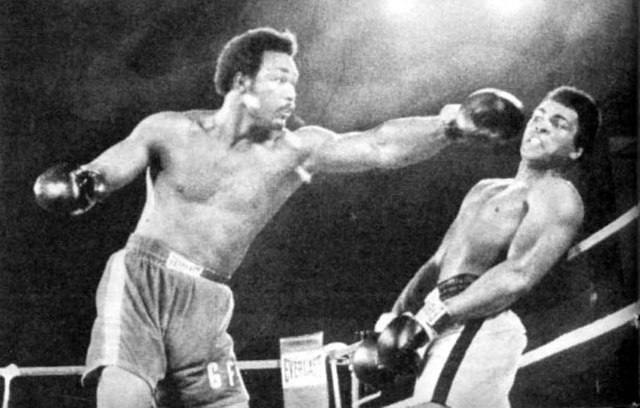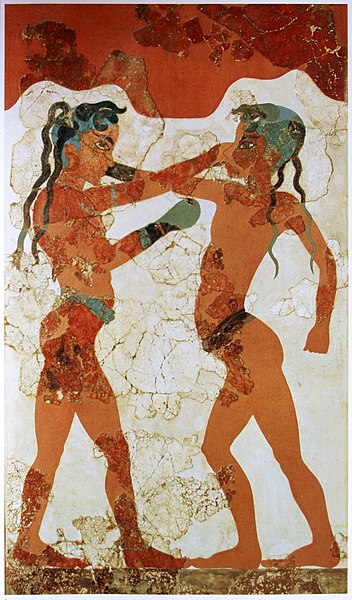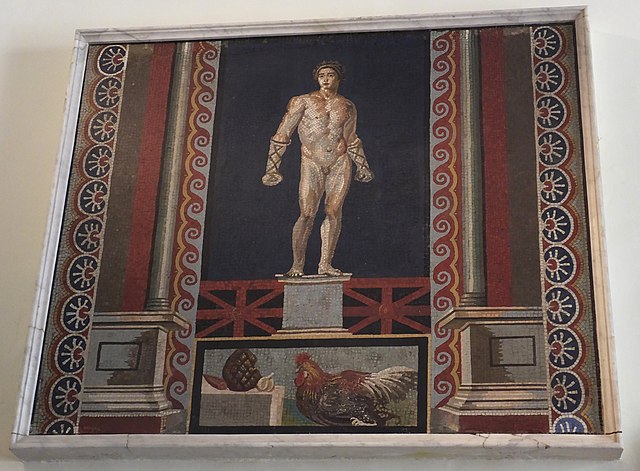Professional boxing, or prizefighting, is regulated, sanctioned boxing. Professional boxing bouts are fought for a purse that is divided between the boxers as determined by contract. Most professional fights are supervised by a regulatory authority to guarantee the fighters' safety. Most high-profile bouts obtain the endorsement of a sanctioning body, which awards championship belts, establishes rules, and assigns its own judges and referees.
George Foreman vs. Muhammad Ali in 1974, one of the most famous fights in the history of professional boxing
Philadelphia Jack O'Brien
Boxing is a combat sport and a martial art in which two people, usually wearing protective gloves and other protective equipment such as hand wraps and mouthguards, throw punches at each other for a predetermined amount of time in a boxing ring.
Two Royal Navy men boxing for charity (1945). The modern sport was codified in England in the 19th and early 20th centuries.
A painting of Minoan youths boxing, from an Akrotiri fresco circa 1650 BC. This is the earliest documented use of boxing gloves.
A boxing scene depicted on a Panathenaic amphora from Ancient Greece, circa 336 BC, British Museum
A boxer and a rooster in a Roman mosaic of first century AD at the National Archaeological Museum, Naples






